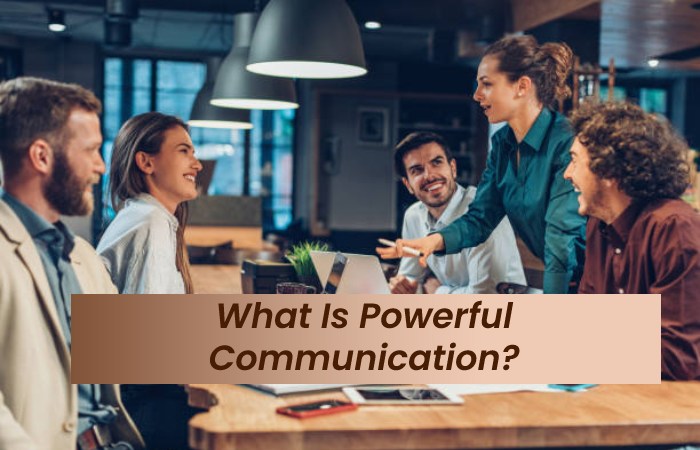Better Communication – Communicating great can assist you with keeping up with great relationships, staying away from conflict and even improving your probability of getting what you need. Figure out how undivided attention, confident communication and body language all amount to magnificent communication skills.
Learning successful communication skills is a straightforward process that allows you to put yourself out there and work on your professional relationships. Knowing how to listen well and convey clearly will help you express your thoughts in job interviews, business meetings, and your personal life.
What Is Powerful Communication?

Being a powerful communicator implies having the option to tune in effectively and articulate your thoughts to everyone around you. Unfortunately, no skill or strategy will make you a better communicator. Instead, effective communication requires a different skill set that covers verbal and nonverbal communication signals and close listening.
Why Is Effective Communication Significant?
Effective communication is crucial throughout the working environment since it allows you to translate your goals and feelings into effectively understandable messages. As a result, effective communication causes you a more helpful worker and eliminates potentially harmful side effects due to miscommunication. In addition, developing an effective communication process assists you with understanding what others are talking about and makes you a superior colleague and colleague.
3 Phases to Better Communication
1. Be an Active Listener
Great listeners clarify questions, respect individuals’ rights, and know when to offer help. Figure out how to be a great listener with these primary phases:
· Allow others to talk. If somebody talks to you about something troublesome or significant, don’t hinder them with a tale about yourself, regardless of whether it’s essential. Allow them to complete what they need to say and afterwards assist them with working out how they feel about it.
· Try not to judge others. If somebody comes to you with an issue, assist them with managing anything that they’re managing and propose choices instead of passing judgment.
· Accept that they might disagree with you. If somebody comes to you for help or advice, don’t anticipate that they should do indeed what you say. While they might have looked for your guidance, they may likewise disagree with it. Allow them to pick their way.
· Ask open questions. Rather than asking ‘yes/no questions, utilize open questions that let the speaker steer the conversation toward the path they need. For instance: ‘Could you at any point tell me about…?’
· Show them you’re listening. Pose questions about everything they say to you, and recap what they’ve said in different words to check whether you have it right. As a result, individuals trust you more, assuming they realize you’re genuinely listening to them.
2. Be a Confident Communicator
There are three primary ways of communicating:
· Forceful communication includes talking in an aggressive and threatening way that estranges others.
· Passive communication is clear as not offering your viewpoints, sentiments or wishes. This type of communication can cause you to feel like others are trampling on you.
· Emphatic communication includes communicating your thought process, how you feel and what you need without requesting that you should have things your way.
· At the point when you are emphatic, you can:
1. offer your viewpoints, feelings and necessities
2. make sensible solicitations of others (while regarding their entitlement to say ‘no’)
3. defend your rights
4. deny demands from others without feeling guilty.
3. Mind Your Body Language
How you talk – including the volume and your manner of speaking, your actual motions and looks – critically affects how your message will grow. For instance, assuming you overlap your arms before your chest and look stern, individuals will probably feel defensive even before they’ve heard what you need to say.
Then again, an open stance, quiet voice and relaxed body language will assist the other individual with feeling calm. Here is an abbreviation that could be useful to you recollect great body language:
· R – Be relaxed and agreeable, and don’t squirm
· O – Embrace an open posture (no crossed arms)
· L – Lean towards the individual – not to an extreme, yet barely enough to show interest
· E – Maintain eye contact without gazing
· S – Face the individual squarely
Conclusion
Hence, a capacity to communicate plainly and effectively with representatives, inside groups, and across the association is one groundwork for a successful business. Also, in the present complex and rapidly developing business climate, with many different communication apparatuses, entirely or to some degree small groups, and, surprisingly, multicultural groups spreading over numerous time regions, effective communication has never been more significant — or seriously tested.


